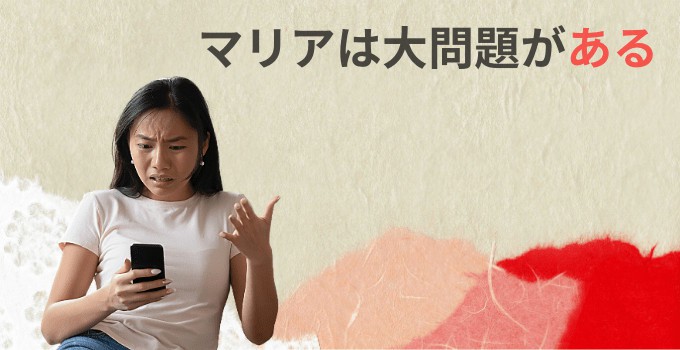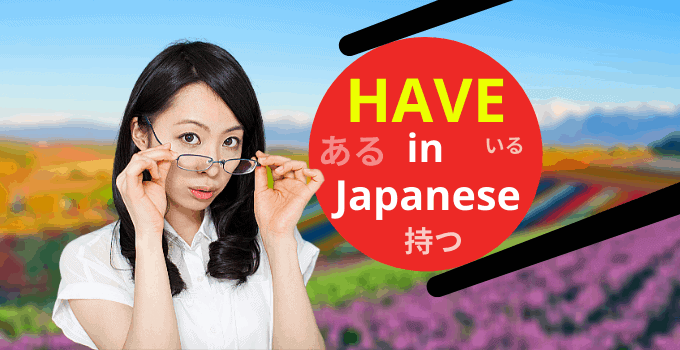English has a few different words that can mean “have,” like possess, own or keep.
Japanese is the same way, with a few different words that can mean slightly different things in different contexts.
In this article, we’ll look at Japanese words you can use to mean “have.”
How do you say “have” in Japanese?
The word “have” is used to show ownership or express that something is close at hand. In Japanese, you can express this with a number of words, including ある (aru) or いる (iru) and 持つ (motsu).
ある is a verb that typically means “exists” when referring to inanimate objects. It can also be used in contexts similar to the English verb “to have.” It must be applied to the object of a sentence with the particle が to have this meaning, rather than to the topic with the particle は.
The verb 持つ, often used to mean “carry” or “hold,” is another word that can be used in the same contexts as English “have.” For this verb, you must use the object particle を.
There are also some words to be used in specific contexts, like the verb 飼う (kau) used to refer to pet ownership. In most cases, however, ある or 持つ will get the job done.
The meanings of “to have”
Even in English, the word “to have” can carry several different meanings.
First, it can be used to show ownership of something, such as in the sentence “I have a car.”
It can also be used, however, to simply show the existence of something, as in “The pond has a fish in it” or “This city has a crime problem.”
Japanese has several different words which can be used in situations where you would use “have” in English, and these also have slightly different meanings in different contexts.
ある (aru) or いる (iru) for “to have”

The first words we’ll review are ある (aru) and いる (iru), both of which are used to show that something exists.
ある is technically the word for to “to be” when talking about inanimate objects, while いる is for living things. However, both these words can also be used to mean “have” in some contexts.
The way to tell these two meanings apart is mostly context, but the verb’s place in a sentence can also help.
If ある or いる is attached to the sentence’s topic with the topic particle は, it just means “to exist.”
If, on the other hand, the verb is attached to the object of the sentence with the particle が, it can sometimes be translated as “have.”
That isn’t always the case, however, and even when following が these two verbs can sometimes be better translated as “is” or “exists.”
The reason for this is basically that Japanese is constructed differently than English. Technically, the real meaning of both these verb is still closer to “exist.”
All the same, it sometimes makes more sense to translate them as “to have” in the context of a given sentence.
If you’re trying to translate this into English and you’re not sure which is best, use your best judgement.
If, on the other hand, you need to use them in Japanese, you can do so without worrying about their technical or literal translation.
Just make sure that the context of the sentence is such that your meaning is understood.
As a brief aside, while ある technically has kanji (有る) the word is typically just written in hiragana.
Examples
A more literal translation might be “As for Maria, [there is] a big problem.”
That’s very awkward, though, so it’s simpler to use the equally accurate translation of “Maria has a big problem.”
Note that we can’t translate this as “Maria is a big problem.”
First of all, the object is 大問題 (a big problem), as indicated by the が that follows it, and Maria is the subject, as indicated by は.
Second of all, Maria is a person and would take いる, rather than ある, as an argument.
If we wanted to state how problematic Maria is, you would simply use the copula and say 「マリアは大問題です。」
「腕に傷がある。」
“I have a cut on my arm.”
Here, the subject of 私は is implied. Setting aside the literal translation of “As for me, a cut exists on my arm,” it makes sense to translate this using “have.”
「あの公園にはリスが一百以上いるよ!」
“That park has more than a hundred squirrels!”
Again, we could also translate this to “There are more than a hundred squirrels in that park!”
Squirrels are living beings, so we need to use いる rather than ある no matter which translation we choose.
持つ (motsu): To have and to hold

The verb 持つ (motsu) typically means “to hold” or “to carry,” but like いる and ある it can also mean “to have.”
持つ is a transitive verb, meaning it requires a direct object.
That means it has to be connected to its object with the object particle を.
This is another case where context will affect translations into English, but if you’re just trying to speak Japanese you don’t need to worry overly much about whether you’re asking someone if they “have” something or if they’re “holding” it.
In addition to actual physical objects, 持つ can be used to talk about opinions, interests and feelings as well.
In these cases, you can choose between 持つ or ある, but keep in mind that the grammar in the sentence needs to match the verb you choose.
Examples
Again, the English translation doesn’t affect the actual meaning in Japanese.
This could also be stated as 「私は俳句に興味がある。」 or “I have an interest in haiku.”
Just make sure the grammar matches.
Talking about pets with 飼う (kau)

Unlike 持つ or いる/ある, 飼う is a very specialized verb.
It’s only ever used to refer to pets or other animals that you might have.
Like 持つ, 飼う is a transitive verb, and must be connected to its direct object with the object particle を.
It’s worth noting that you don’t have to use 飼う to talk about pet ownership.
You can also describe a person’s relationship to their pet in a way that makes いる more appropriate.
If you do use this word for “to have,” though, it’s important to keep in mind that it isn’t a translation for that word in all cases where you’d use the English word.
If you use 飼う to say “I have a headache,” you’re going to get some pretty strange responses, just as you would when saying “I’m raising a headache” or “this is my pet headache” in English.
Examples
In the latter case, you could also say 「友人の家に猫が三匹います。」
While this literally says “There are three cats at my friend’s house,” it is essentially the same as saying “My friend has three cats.”
As with 持つ vs ある, the grammar of this alternative sentence follows the grammar rules for いる, not the rules for 飼う.
Other “to have” words
There are plenty of other options for “to have,” many of which have specific contexts or are simply obscure.
Here are just a few:
占領 (senryou) – To have an area or space to yourself. Also the word for a military occupation.
抱える (kakaeru) – To have problems or debts. This word can also mean “carry in your arms” or “employ,” so it’s similar to saying “have a lot on your shoulders” metaphorically, which is why it’s usually used for negative things.
含む (fukumu) – To contain or have within. If you’re holding something in your mouth or harboring a grudge, you can also use this word.
摂る (toru) – To have a meal or take vitamins. (For other types of medicine, use the word for “to drink,” 飲む or nomu.)
有する (yuu suru) – To have or possess.
要する (you suru) – To have or possess.
抱く (idaku) – Also used for “to embrace,” this verb can be used to express having a thought or feeling.
兼ね備える (kanesonaeru) – This compound transitive verb means to have two specific things at the same time.
In most, if not all, cases, however, you’re probably better off sticking to one of the three words described at length earlier in this article.

Hey fellow Linguaholics! It’s me, Marcel. I am the proud owner of linguaholic.com. Languages have always been my passion and I have studied Linguistics, Computational Linguistics and Sinology at the University of Zurich. It is my utmost pleasure to share with all of you guys what I know about languages and linguistics in general.

